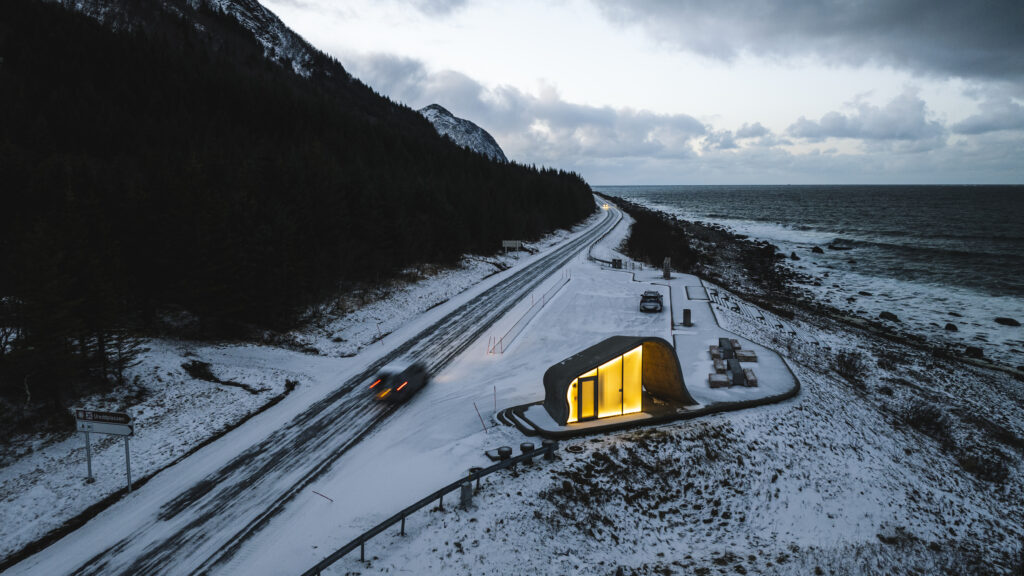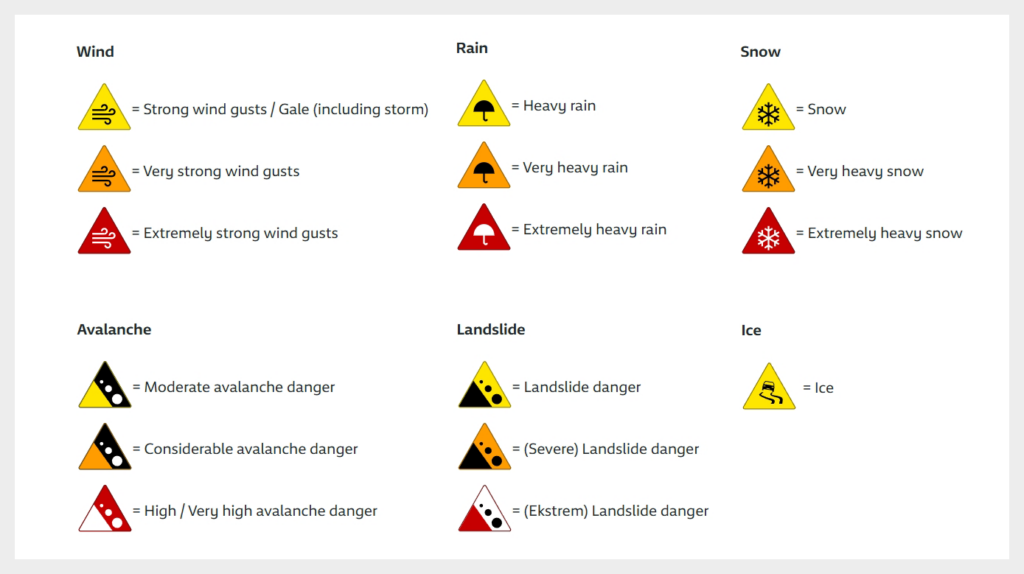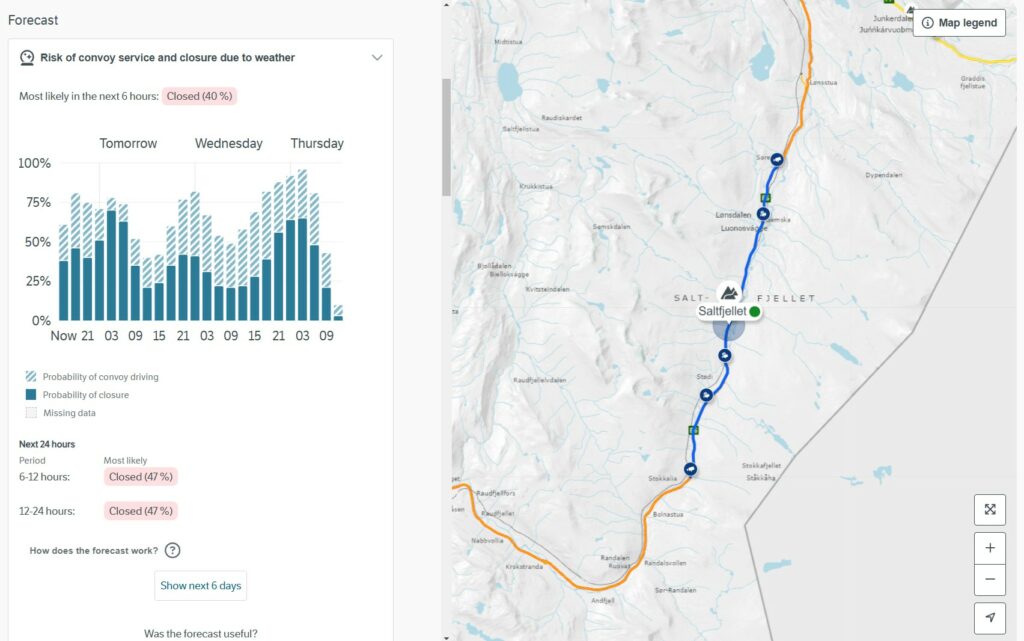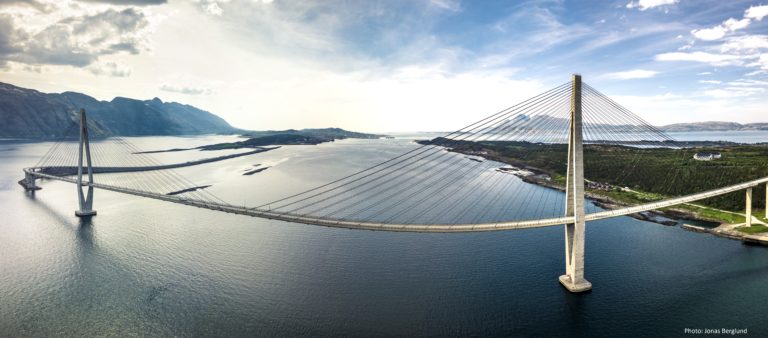Everything you need to know about winter driving in Helgeland

Are you and your car ready for winter driving in Helgeland and Northern Norway? Here’s what you need to know and what gear to bring.
Before you start your drive
Check the weather forecast and heed the weather warnings
Winter roads demand extra caution due to heavy snow, icy surfaces, avalanche risks during mild weather, and strong winds. Stay updated on the weather at YR.no and pay close attention to any weather warnings. These are ranked by increasing severity using yellow, orange, and red warning levels:

Yellow: Consider alternative routes, allow plenty of time, and drive carefully.
Orange: Be extra cautious. There’s a high risk of accidents and road closures. Consider waiting for better weather or choosing alternative routes.
Red: Avoid driving unless absolutely necessary. The risk of accidents and closed roads is very high. Wait for better weather or find alternative routes or transport options.
Check If the road is open
Strong winds and heavy snow can cause weather-controlled mountain roads to close. This can affect key routes such as:
Tosenfjellet (between E6 and Brønnøysund)
Krutfjellet (between Hattfjelldal and Sweden)
Sjonfjellet (between Mo i Rana and Nesna)
Saltfjellet (between Mo i Rana and Rognan)
Umbukta (between Mo i Rana and Sweden)
 Vegvesen.no
Vegvesen.no
Visit the website of the Norwegian Public Roads Administration (Statens vegvesen, Vegvesen.no) for updates and forecasts on major mountain passes throughout Norway.
Please note: Some smaller mountain roads, such as Melfjellet, Korgfjellet, and the road to Rabothytta, are not plowed and remain closed all winter. If you’re unsure about a specific route, check with locals or contact the tourist information office.
Make sure you have proper winter tires
You can’t drive when the roads are icy if you don’t have winter or all-season tires. Driving with summer tires on winter roads is both dangerous and illegal. Keep in mind that even if the roads seem safe when you start your trip, conditions can change quickly, especially when driving into higher elevations.
Most locals switch to winter tires around mid-October, or even earlier if snow has already fallen in the mountains. Winter tires come with or without studs, with many drivers opting for studded tires for better grip on ice. In both cases, the tread depth must be at least 3 millimeters.
Fuel up or charge your car
If the road you plan to drive on gets closed due to bad weather or a vehicle rescue operation, you might have to wait, take a detour, or even turn back. Make sure you have enough fuel or a fully charged battery; not only to reach your destination but also to keep the car warm while you wait.
Make sure you have the gear you need
Always pack:
Snow brush and ice scraper to clear snow and ice from your car windows.
Reflective vest, so you’re visible if you need to step out of the car in the dark.
Warning triangle to alert other drivers if you experience a breakdown or accident.
It’s also wise to bring:
First aid kit with a thermal blanket is essential for safety in case of an accident.
Tow rope, in case you slide off the road or get stuck.
Jump cables are handy if your cars start battery dies in freezing temperatures (not needed for electric cars).
Warm clothes or a wool blanket to stay warm if you have to wait for assistance.
Extra windshield washer fluid for those mild winter days with dirty, slushy snow on the roads.
While driving
Drive smooth and steady
Keep your speed lower than in summer, especially on sharp turns, and leave extra distance between your car and the one in front. Braking distances are much longer on icy roads, and sudden steering can cause your car to skid.
If you’re unsure about the road conditions, carefully test how your car handles braking and turning in a safe spot.
Don’t stop in the road
If you want to stop to take pictures or something else along the road, pull completely off the road so you’re not in the way of other cars. Avoid stopping in lay-bys marked with an “M” sign, as these are passing places for cars on narrow roads.
Don’t try to overtake the snowplow
Snowplows often drive slower than regular traffic, but you should not try to overtake them. The large plow and swirling snow can block visibility, making passing dangerous. Plus, road conditions are usually worse in front of the plow. Instead, just wait until the snowplow moves aside or comes to a stop.
Turn off the ignition when you leave the car
In gas and diesel cars, the 12-volt battery can drain quickly in cold weather if you leave the lights or heater on while the engine is off. This can leave you unable to restart your car. Always turn off the ignition completely if you need to stop for a while.
If something goes wrong
If your car breaks down, you’re involved in an accident, or you come across an accident:
Turn on the hazard lights to alert other drivers that there’s an issue.
Put on a reflective vest and set up the warning triangle. Place the triangle at least 150 meters from your car so other drivers see the hazard in time.
Call 113 if anyone is seriously injured.
Contact a tow service like Redgo or Viking for help getting your car back on the road or to a repair shop.

